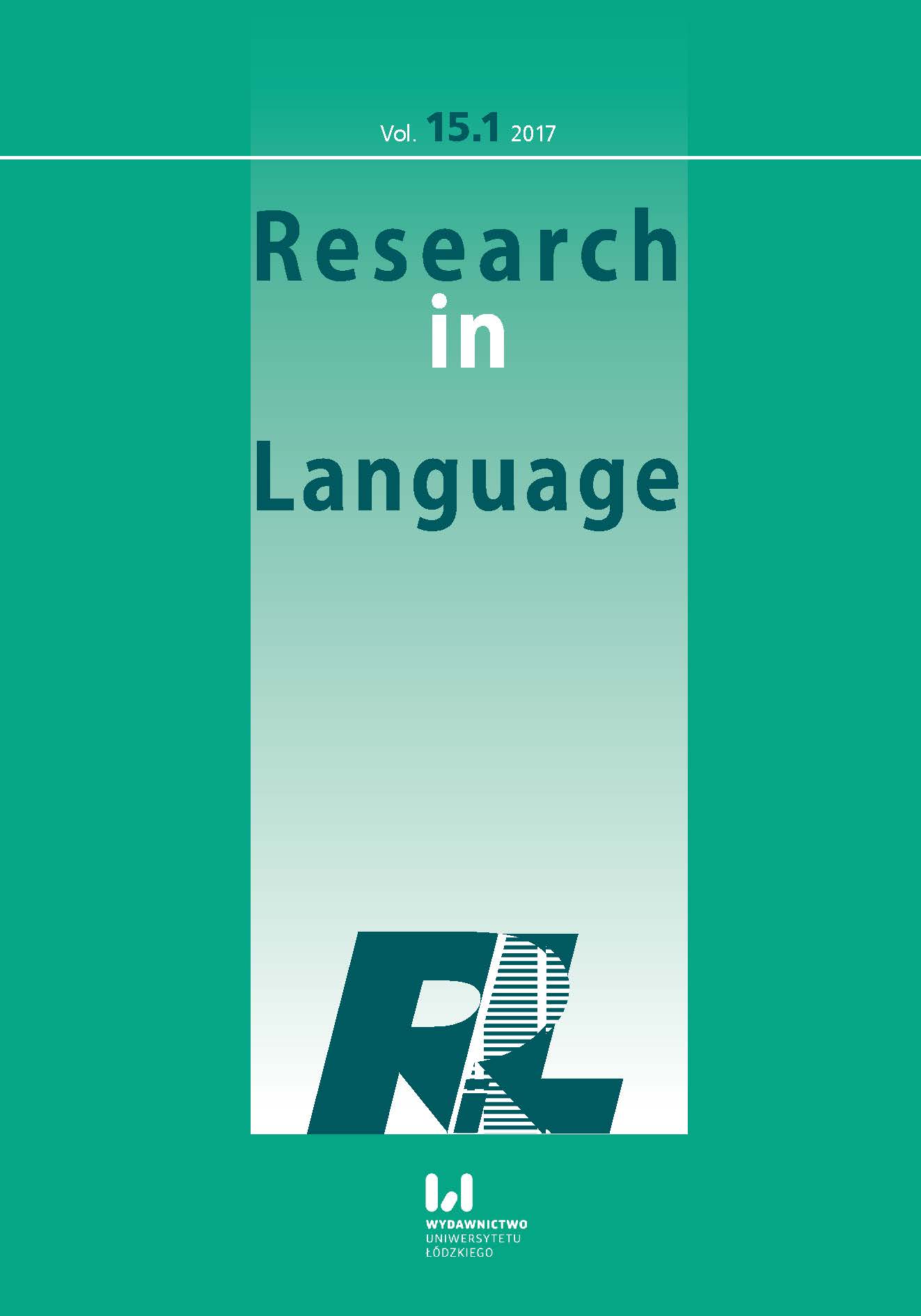What Was a Relevant Translation in the 18th Century?
DOI:
https://doi.org/10.1515/rela-2017-0007Keywords:
18th century, cognitive effects, intertextuality, processing effort, relevance theory, translationAbstract
The paper applies RT to analyse an 18th century translation of a Latin text by the preeminent Romanian scholar Demetrius Cantemir. The translation diverges significantly from the original and was met with harsh criticism. Using the conceptual toolkit of RT, I argue that the differences between the original and its English translation were motivated by the translator’s desire to yield the same cognitive effect without putting the audience to unnecessary processing effort. Both effects and effort need to be evaluated by taking into account the respective cognitive environments of the source-text and the target-text audiences. The intertextual dimension of the text under scrutiny adds to the difficulty of communicating the same message in different languages and cultures.
References
Cantemir, Dimitrie. 2015. Incrementorum et decrementorum Aulae Othmannicae sive Aliothmannicae historiae a prima gentis origine ad nostra usque tempora deductae libri tres. Edition by Dan Sluşanschi, revised by Octavian Gordon, Florentina Nicolae, MonicaVasileanu, translated into Romanian by Ioana Costa. Bucureşti: Editura Fundaţiei pentruLiteratură şi Artă [IDAO]
Google Scholar
Cantemir, Demetrius. 1734–1735. The History of the Growth and Decay of the Othman Empire. Translated into English from the author’s own manuscript by N. Tindal, London, printed for James, John and Paul Knapton, at the Crown in Ludgate Street, 2 vol. [HGD]
Google Scholar
Albrecht, Michael von. 2003. Cicero’s style: a Synopsis. Leiden: Brill.
Google Scholar
Almazàn-García, Eva M. 2001. Dwelling in marble Halls: A Relevance-Theoretic Approach TO Intertextuality In Translation. Revista Alicantina de Estudios Ingleses 14. 7–19. doi: 10.14198/raei.2001.14.01
Google Scholar
Burke, Peter and R.Po-chia Hsia. 2007. Introduction. In Peter Burke and R.Po-chia Hsia (eds.), Cultural Translation in Early Modern Europe, 1–4. Cambridge: Cambridge University Press.
Google Scholar
Burke, Peter. 2004. Languages and Communities in Early Modern Europe. Cambridge: Cambridge University Press.
Google Scholar
Burke, Peter. 2007. Cultures of Translation in Early Modern Europe. In Peter Burke and R.Po-chia Hsia (eds.), Cultural Translation in Early Modern Europe, 7–38. Cambridge: Cambridge University Press.
Google Scholar
Cândea, Virgil. 1999. Manuscrisul original al Istoriei Imperiului Otoman de Dimitrie Cantemir. In Dimitrie Cantemir, Creşterile şi descreşterile Imperiului Otoman, XVII–LVII. Bucureşti: Roza Vânturilor.
Google Scholar
Cândea, Virgil. 2010. Prefaţa traducerii româneşti. In Dimitrie Cantimir, Istoria creşterilor şi a descreşterilor Curții othman[n]ice sau Aliothman[n]ice, de la primul început al neamului, adusă până în vremurile noastre, în trei cărţi, 5–9. Bucureşti: Paideia.
Google Scholar
Culler, Jonathan. 2005. The pursuit of signs: semiotics, literature, deconstruction. London: Routledge.
Google Scholar
Ellis, Robert and Liz Oakely-Brown. 2008. British Tradition. In Mona Baker and Gabriela Saldanha (eds.), The Routledge Encyclopedia of Translation Studies, 2nd edn, 344–354. London / New York: Routledge.
Google Scholar
Eşanu, Andrei and Valentina Eşanu. 2008. Dimitrie Cantemir şi Academia de Ştiinţe din Berlin. In Andrei Eşanu (ed.), Dinastia Cantemireştilor, 254–266. Chişinău: Ştiinţa.
Google Scholar
Gutt, Ernst-August. 1990. A Theoretical Account of Translation – Without a Translation Theory. Target: International Journal of Translation Studies, 2/2. 135–164.
Google Scholar
Gutt, Ernst-August. 2004. “Challenges of Metarepresentation to Translation Competence.” [Online] Available at: http://cogprints.org/6328/1/LICTRA2001-Gutt_w_figures.pdf [Accessed on 15th February 2015].
Google Scholar
Gutt, Ernst-August. 2014. Translation and Relevance: Cognition and Context. 2nd edn. London: Routledge.
Google Scholar
Hammer, Joseph de. 1824. Sur l’Histoire Ottomane du prince Cantemir. Journal Asiatique, 4. 32–45.
Google Scholar
House, Juliane. 2001. Translation Quality Assessment: Linguistic Description versus Social Evaluation. Meta: Journal Des traducteursMeta:/Translators’ Journal 46 (2). 243–57.
Google Scholar
Koutrianu, Elena. 2009. Intertextuality and Relevance Theory in the Interdisciplinary Approach to Surrealist Literature and Painting. A Case-Study: Nikos Engonopoulos’s Bolivar. ResearchNotebooks 29. 145–154.
Google Scholar
Martínez, José Mateo. 1998. Be relevant (Relevance, translation and cross-culture). Revista Alicantina de Estudios Ingleses, 11. 171–182. doi: 10.14198/raei.1998.11.13
Google Scholar
Panaitescu, Petre P. 1958. Dimitrie Cantemir: viaţa şi opera. Bucureşti: Editura Academiei.
Google Scholar
Salama-Carr, Myriam. 2008. French tradition. In Mona Baker and Gabriela Saldanha (eds.), The Routledge Encyclopedia of Translation Studies, 2nd edn, 404–410. London / New York:Routledge.
Google Scholar
Sellevold, Kirsti. 2012. Style as Linguistic Resemblance. Translating the ‘Disjointed, Broken and Gadding’ Style of the Essais. In Ewa Wałaszewska and Agnieszka Piskorska (eds.), RelevanceTheory: More Than Understanding, 307–316. Newcastle upon Tyne: Cambridge Scholars Publishing.
Google Scholar
Sperber, Dan and Deirdre Wilson. 1986. Relevance: Communication and Cognition. Oxford: Blackwell.
Google Scholar
Sperber, Dan and Deirdre Wilson. 1995. Relevance: Communication and Cognition. 2nd edn. Oxford: Blackwell.
Google Scholar
Waquet, Françoise. 2001. Latin or the Empire of a Sign: from the Sixteenth to the Twentieth Centuries. Translated by John Howe. London: Verso.
Google Scholar
Downloads
Published
How to Cite
Issue
Section
License
Copyright (c) 2017 © Copyright by Authors, Łódź 2017; © Copyright for this edition by Uniwersytet Łódzki, Łódź 2017

This work is licensed under a Creative Commons Attribution-NonCommercial-NoDerivatives 4.0 International License.










